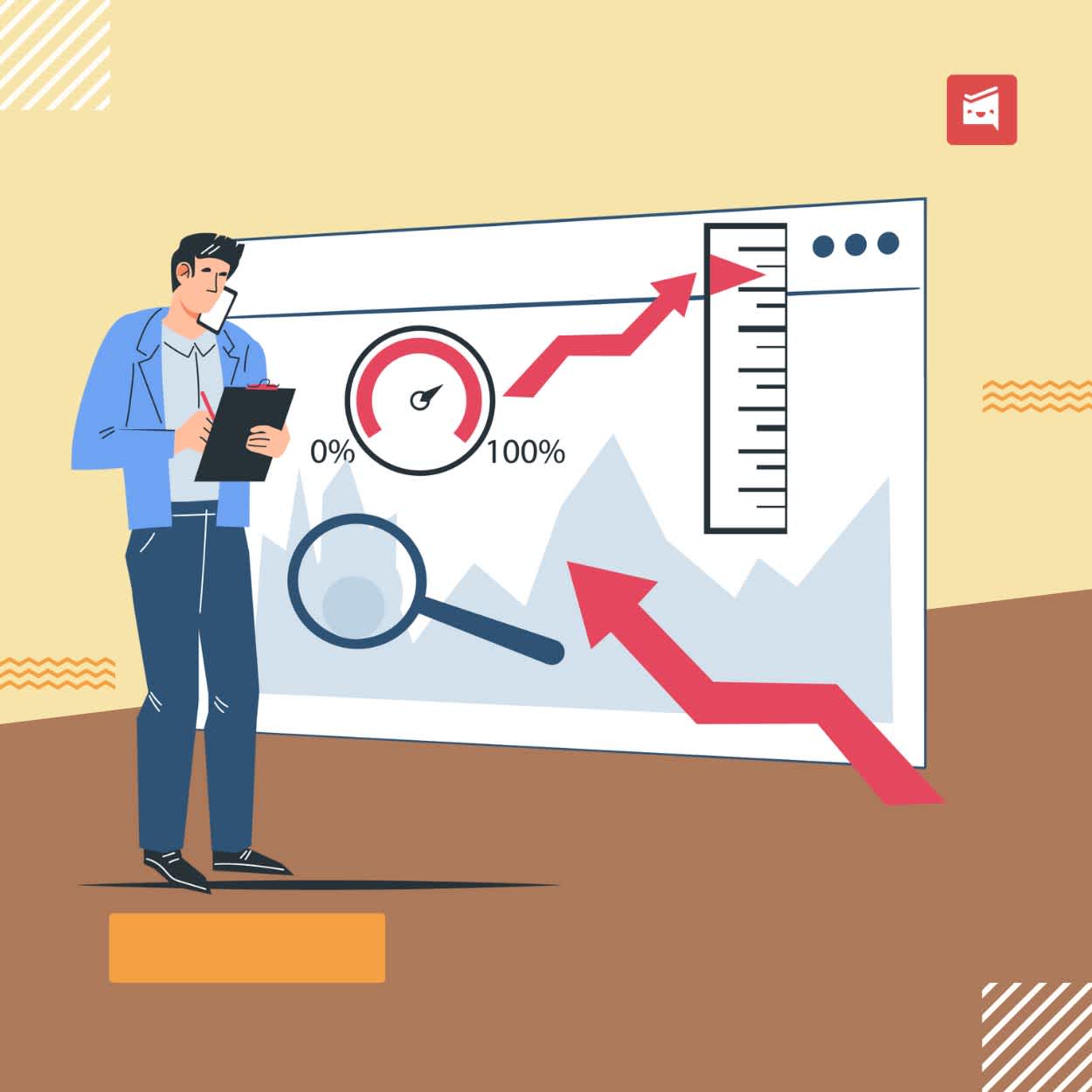How KPIs and Analytics Can Help SEO for Small Businesses
ByJulian Gette
Workast publisher

Workast publisher
It’s going to be very difficult to run any kind of business these days without using SEO. Whether your company is small or big, local or global, ranking well on Google is a huge added advantage. But here is the deal – SEO might be extremely confusing with all its tactics and pitfalls. What strategies work best? How can you accurately measure your efforts? Those are all legit questions. And the only way to answer them is by establishing proper SEO KPIs and SEO analytics.
This is where SEO reporting dashboards can save the day. They provide the means to access the data you need to measure and evaluate your performance over any given period. This way, you can clearly see what strategies work better for you, which can help you make better decisions that drive growth. So, what are the metrics and KPIs you have to monitor? That’s what we’re going to discover today.
An SEO dashboard is basically an interface that helps you monitor your web performance in real time easier. You can track anything from your ranking changes and backlinks to organic traffic and conversions automatically. Having an SEO reporting dashboard allows you to make sense of what is really going on with your SEO strategy at any given time and helps you visualize data easily.
But here is a thing – web performance itself is quite a complex thing, and it consists of several components. Some aspects of SEO are notoriously more difficult to track compared to others. Whether you are working on your link building or your click-through rates, you will need measurable data to know if your efforts are really paying off.
Besides, you will have to use multiple approaches based on your use case. For example, measuring the results of your videos on social media and your guest posts on blog or online journal won’t be the same. You will have to use different tactics and maybe even tools to understand your performance.
But how do you tell if this is driving the kind of traffic you want to see or if it’s something else? At first glance, you might feel like your tactics are good enough, but only when you check your SEO dashboard and compare the KPI reports can you really get a full picture of the ROI of your efforts so far. This makes it easy to course correct quickly so you don’t waste time and resources.
With that said, it might not be that easy for beginners. But if that’s you, don’t worry! We’ve all been there. And it all gets easier once you know what you’re doing. So, let’s see the main KPIs you should track when doing your search engine optimization.
Tracking SEO KPIs is a big part of running a successful business online, whether you are running a huge corporation, a local coffee place, or a private home health provider business. And the sooner you start monitoring your SEO results, the better. Here are some of the SEO metrics you can begin keeping tabs on right away:
Who doesn’t want to understand the real visibility their brand has in search results? This is not just curiosity but also a good way to see whether your SEO efforts are moving in the right direction. Because, at the end of the day, the ultimate goal of search engine optimization is getting you that organic traffic. So, what metrics should you watch out for in your SEO reporting dashboard?
Your ranking position in search results pages. This might be an obvious one, but here is an important detail – you have to track this metric continuously because it isn’t static, and your ranking will change over time. You can take a look at it once a week, for example, and hopefully, you can see some upward movement compared to the last time you checked.
Featured snippets and other perks. Do you show up on featured snippets, local packs, and knowledge panels? These three are the ways Google highlights the most useful results (at least according to its algorithm). Why are these important? This is one surefire way to drive traffic to your web pages because you are standing out from the crowd (aka thousands and millions of other search results).
Keyword rankings. What keywords are you ranking for, and how well are you doing compared to your competitors? Even if you know nothing about SEO, you’ve definitely heard of keywords. No wonder – these are fundamental for your rankings. So, what should you track in this area? Your keyword rankings and our keyword gaps compared to your competitors. Want to dig deeper? Go ahead and do a keyword analysis breaking down the keyword metrics by volume, region, etc. According to Communication Square, you don't even need fancy software for this part. Even a simple Excel will do.
So, these 3 SEO KPIs will indicate how visible you are to the search engines and your target audience, of course. Needless to say, this will have a direct impact on your leads, conversions, and sales.
How many times does your site show up in SERPs for search queries? This is what is known as impressions – one more important SEO metric to keep track of. The more your content or web pages make an appearance, the more organic traffic you are bound to attract. How?
Well, your impressions directly impact your organic sessions – those visits from people who found you organically through their online search journeys. Do you notice any increase in your search rankings and impressions? Then, you should see that reflected in your organic sessions as well.
Don’t like what you see in your SEO dashboard? Cheer up! You can always try to improve your performance with these four simple steps:
Fix a target number for impressions and make sure your efforts also match your goals.
Combine a few SEO tactics to increase your odds (don’t be afraid to think outside the box). Sometimes, even adding quality guest posting to your link-building strategy can attract those “juicy” links you want to boost your organic traffic. This gives you a lot of advantages over your competitors who only rely on blogging on their own websites.
Track your impressions over time (preferably yearly) and adjust your goals or tactics as needed.
Want to get a clear picture of how people and search engines see and experience your site? Then keep an eye on these metrics:
Page time (aka the total time users spend on your page)
Sessions (number of times users visited your website)
Engagement (i.e., shares, likes, comments, etc.)
Bounce rate (the percentage of users leaving without performing any action on your page)
You want to keep your eyes on these so you know when your audience is not really having the best experience on your website and quickly fix the situation. You want the time spent on your web pages to be as high as it possibly can be and the bounce rate to be very low.
A high bounce rate is a dead giveaway that your visitors are not finding what they came for – maybe the content simply doesn't resonate with them, or the page load speed is terrible. Either way, find the problem and fix it quickly before it affects your performance and conversions.
Start by creating better content with clear CTAs. Make sure it is easy to go from page to page. Plus, make sure each page loads fast, all your images are optimized, and the mobile version of your site is also on point. This will make your visitors want to hang around more. As a result, you will be able to see more of them eventually convert.
Apart from your content quality and technical SEO, backlinks are pretty top of the list when tracking SEO effectiveness. But when doing link building, there's a lot that goes on at the same time, and all that affects your visibility.
This is where SEO reporting dashboards can save the day. Whether you are doing SEO yourself or hire an SEO Agency, measuring the key metrics is vital. They provide the means to access the data you need to measure and evaluate your performance over any given period.
For example, you do need to get more than a few backlinks to really enjoy the benefits. At the same time, quantity alone won't cut it, especially if you want to be able to outrank your competitors. That’s why, in addition to the volume of backlinks, you should also be looking for:
Number of referring domains (and their quality)
Lost links
Toxicity/spam scores
Anchors and their diversity
Ration of dofollow and nofollow links
Your competitors' backlinks profiles and how they compare to yours, etc
At the end of the day, all the other metrics should produce one visible result – increase your conversion rates. This could be as simple as signing up for a newsletter and downloading a PDF or as big as subscribing to a service and buying a product. What matters is that users take the desired action.
So, how do you track this specific metric? Do you make sales from that landing page or blog post? Did your email subscriptions or downloads increase thanks to SEO? To answer these questions, you have to track your customer journey. When you know where your leads come from, you can see what works best for you – a particularly good landing page, paid ads, referral links, or a highly ranked blog post.
If you do your SEO and the numbers don’t show any change over time, that’s probably a sign that you need to try a new search engine optimization strategy. It’s okay if you end up doing this a few more times before you get the desired results. At any rate, your specific metric depends on your business goals. SEO is useless if your content isn’t written for conversions. The same as it’s no use to have tons of email subscribers if you don’t even send your newsletter out.
An SEO reporting dashboard allows you to pull data from multiple platforms into one place. So now you can get real-time reports on how your SEO strategy is really doing. Track metrics like impressions, bounce rates, traffic, and conversion rates. But don’t forget to take action and make quick changes based on your results.
